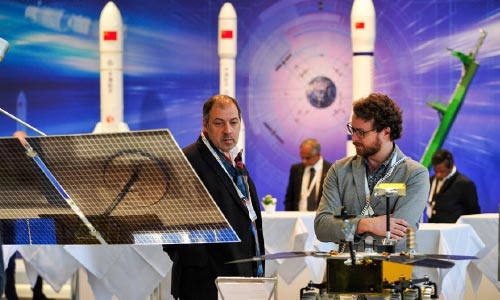BERLIN - China’s Chang’e-4 lunar probe was launched earlier this month, and it is expected to make the first-ever soft landing on the far side of the moon.
During the mission, China has cooperated with four other countries, three of which are from Europe, an epitome of the increasing space cooperation between China and the European Union (EU) in recent years.
The Chang’e-4 mission will be a key step in revealing the mysterious far side of the moon, most of which remains unknown.
Germany’s scientific payload is a “Lunar Lander Neutron and Dosimetry” instrument, developed by Kiel University, which aims to measure radiation on the moon, mainly for future manned missions there, also the water content beneath the landing unit, said Robert Wimmer-Schweingruber, who is leading the research team.
Karl Bergquist, the European Space Agency’s (ESA) administrator for the International Relations Department, called the Chang’e-4 mission scientifically and technologically “very impressive,” because “no one has ever done it, this mission will therefore advance our knowledge of the moon.” He also called the lunar mission “the first step towards future explorations farther afield.”
Stressing the difficulties of landing on the far side due to spacecraft controlling and signal relay, Wimmer-Schweingruber said that “the satellite is already in place. We’re orbiting the moon right now. It has worked well.”
Earlier, China has already launched a relay satellite “Queqiao,” tasked with transmitting signals between Chang’e-4 and ground control.
Scientific tasks for Chang’e-4 also include low-frequency radio astronomical observation, surveying the terrain and landforms, as well as detecting the mineral composition and shallow lunar surface structure, according to the China National Space Administration (CNSA). (Xinhua)
Home » World » China, EU on Path of Expanding Cooperation in Outer Space
China, EU on Path of Expanding Cooperation in Outer Space

